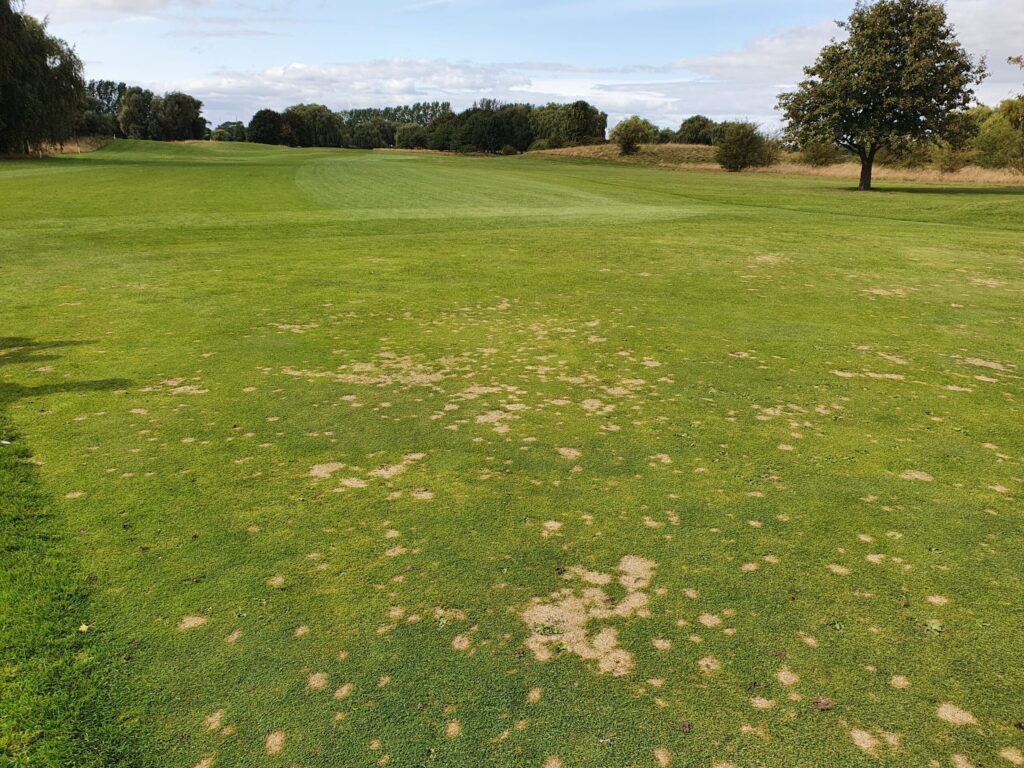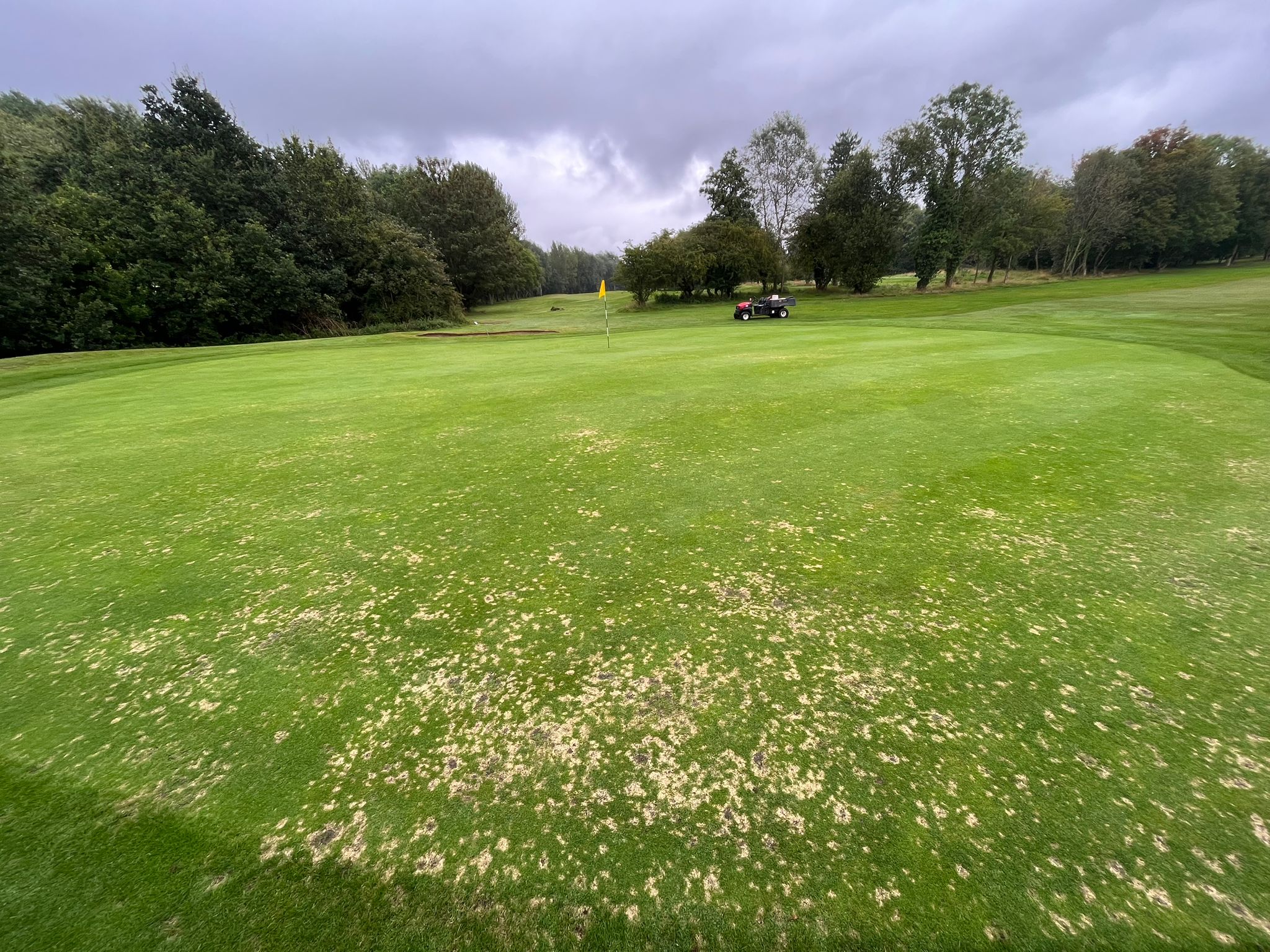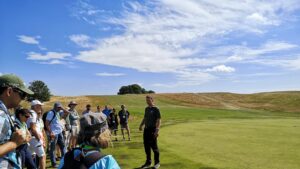The climate is changing, both temperature and precipitation pattern, and we already see an impact on the geographical distribution of some turf grass diseases. This requires the ability to adapt and change disease management if a major quality decline is to be avoided. Turf areas are an important part of our society used both for sport activities and relaxation adding social value and ecosystem services.
It can be difficult to predict, which diseases are specifically affected by climate change because the conditions for disease development depend on each particular pathogen, but increased humidity and temperature certainly comprise a more favorable environment for several fungi and faster incubation cycles. Where turf managers seek to reduce pesticide use, the challenges will become even more immense.
Potential devastating diseases if predicted climate changes continue
Brown Patch is starting to become a problem in northern Europe on high-end sports pitches during the summer renovation with perennial ryegrass. It is a turfgrass foliar disease occurring in hot, humid weather and can potentially destroy all the small seedlings in the pitch. Brown patch is encouraged when nighttime temperatures are above 16°C and daytime above 27°C with at least 10 hours of leaf wetness.
Dollar Spot is becoming more frequent in many European golf courses. Originally it was a disease in the continental part of Europe with hot and humid summers up to 30°C, but now it has expanded to more coastal areas. Dollar spot has a severe effect on the playing quality.
Gray Leaf Spot has exploded all over Europe in the hot summer of 2022. It is causing damage on high-end football pitches during summer and early fall. The development is favored by increased temperature which enhances the duration of leaf wetness and thereby the chance of spore germination.
Test for disease resistance
The official turf lists in Europe are currently not providing knowledge about variety tolerance to these new diseases. There are a few tests under golf green conditions but no registration of Dollar spot resistance. In the turf trials for sports and lawn Brown Patch and Gray Leaf Spot are also not scored/observed.
In the United States and Canada, as part of the NTEP trials, many varieties are rated for these diseases. However, translating tolerance data to European condition is not a one-to one exercise, because the fungal strains and their pathogenicity might be different.
As a breeding company we follow the development of diseases very closely in our pursuit of providing the best plant material to cope with the problem. Breeding new disease-tolerant grasses are time consuming, and in the meantime, in order to help our customers, we screen our variety portfolio to identify the most disease-tolerant grasses. Another solution is to source tolerant varieties from other regions, and it represents currently the most expedient way.








